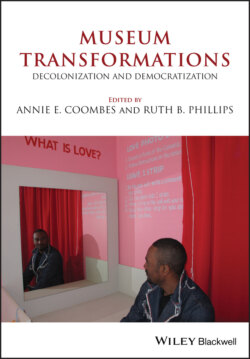Читать книгу Museum Transformations - Группа авторов - Страница 53
The first museum of Sikh history
ОглавлениеThe full expression of Sikh suffering can be found instead in the Central Sikh Museum, the first museum of Sikh history to be established in India after Independence. This museum was opened in 1958 within the precincts of Sikhism’s most holy center, the Golden Temple Complex in Amritsar. It is run by the Shiromani Gurudwara Prabandhak Committee (SGPC), a powerful religious trust that regulates the practice of Sikhism within India. Belonging to a religious trust and located within a shrine, the SGPC’s Central Sikh Museum is a private Sikh organization, and is able to function very differently from a public museum sponsored by the state.
FIGURE 2.2 Interior of Khalsa Heritage Complex, showing galleries dedicated to the early gurus of Sikhism.
Photo courtesy of A B Design Habit, New Delhi.
The Central Sikh Museum was initially established to preserve and display the SGPC’s collection of rare relics, such as autograph texts by the Sikh gurus, and weapons, garments, and other articles of their use. In the 1960s the SGPC hired Sikh artists to produce a cycle of history paintings for the museum.11 These large canvases depicted events from the gurus’ lives and elaborate battle scenes as well the horrendous punishments borne by the eighteenth-century Sikh martyrs. We see Baba Dip Singh’s head being sliced off by a sword and a fountain of blood spurting from his neck; Bhai Mati Das being sawn down the middle; Sikh mothers witnessing their babies slaughtered in a Herodian massacre. In turn, this cycle of paintings provides the visual vocabulary that now circulates in popular prints and books on the theme of Sikh martyrdom.
FIGURE 2.3 Central Sikh Museum, Amritsar. Visitors view paintings showing eighteenth-century martyrs.
Photo: Brinda Kumar © Kavita Singh and Saloni Mathur.
Over the years, hundreds of other images of Sikh heroes and martyrs have accumulated in the Central Sikh Museum. The individuals memorialized on the museum’s walls include prominent religious figures, social workers and reformers, scholars and litterateurs, sportsmen and soldiers. They also include victims of the anti-Sikh riots in 1984, Khalistani terrorists from the 1980s and 1990s, and the controversial preacher Jarnail Singh Bhindranwale.12 Portraits of the two assassins of Indira Gandhi also find a place on these walls. Honoring men who are condemned elsewhere, since the end of the troubled 1980s this museum has become a shrine to the memory of Khalistan (Figure 2.3).
